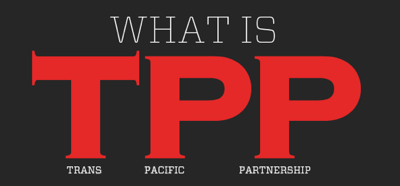The Trans-Pacific Partnership (TPP) has been an ongoing trade deal that was finally agreed upon by all the 12 countries. The secret deal connects 12 countries of US, Brunei, Chile, Australia, Singapore, Japan, Mexico, Vietnam, New Zealand, Canada, Malaysia, and Peru. The regional trade deal is already receiving mixed reviews that are focused on the environmental, labor, trade and intellectual property issues The trade deal establishes international common standards and is likely to be a threat to those countries that have been left out. Some of the non-TPP countries also happen to be large emerging markets like China, India, South Korea and Taiwan. The trade deal was put under ‘fast track’ which allows lawmakers to up-or-down vote the agreement and does not leave room for further amendments.
What is the objective of TPP?
The underlying intention of TPP is allowing associated countries to benefit from each other allowing more flexibility in nations that are ruled by strict state-driven laws and poor working conditions. The nations may benefit from world’s largest economy like that of the US. Japan has agreed to give Australia more access to dairy, sugar, beef, rice and horticulture that had been tightly protected by tariffs and subsidies in the past.
Many are of the opinion that TPP will give the US more access to the Asian markets, something that China has been attempting to do for a while. Initiatives like Asia Infrastructure Investment Bank, New Development Bank, and ‘One Belt One Road’ are all focused on developing and strengthening ties in the Asian region. However, these are only a few of the many efforts by China. By the end of this year, China hopes to finalise its own free trade deal, the Regional Comprehensive Economic Partnership(RCEP), that will also include TPP members Australia, New Zealand, Brunei, Malaysia, Japan, Singapore and Vietnam and the non-TPP members of advanced and emerging economies like China, India, South Korea, Darussalam, Cambodia, Indonesia and Laos.
However, the US President in his statement on October 5, 2015, said,
“When more than 95 percent of our potential customers live outside our borders, we can’t let countries like China write the rules of the global economy. We should write those rules, opening new markets to American products while setting high standards for protecting workers and preserving our environment.” tweet
Who will benefit from the deal?
The ‘criticism’ part of the deal just makes the whole pact sound too bad to exist. But that might not be the case.
The deal is likely to have an influence on the price of every product and could remodel the working structure of industries in the 12 regions providing comfort to those nations that have strict labor laws and poor working conditions.
The Wall Street Journal listed out sectors and countries in the Asian region that will suffer and benefit from the TPP. The good news is that much of the TPP nations might benefit. According to the WSJ reports, TPP winners will benefit from the more ‘favorable tariff rates’ than their non-tariffs competitors. ‘Japanese automakers, apparel makers in Vietnam, Australian Sugar refineries and Malaysian Palm oil producer’ are most likely to gain from the deal. The markets that will be at a disadvantage include South Korean automakers and Chinese manufacturers mainly because they are not a part of the TPP.
Why is TPP being criticised?
 TPP has been criticised for its secrecy and excluding some big emerging markets that could have been an added benefit. But that might not be all. TPP remains open to debates on environment, trade and labor issues. Many classified documents point that TPP might not be good for economies in the long run. However, the verdict remains once the deal is sealed and implemented.
TPP has been criticised for its secrecy and excluding some big emerging markets that could have been an added benefit. But that might not be all. TPP remains open to debates on environment, trade and labor issues. Many classified documents point that TPP might not be good for economies in the long run. However, the verdict remains once the deal is sealed and implemented.
When will TPP be implemented?
According to the New York Times, the final text of the agreement will take a month to become available to the public. As mentioned in the Statement by the President on the Trans-Pacific Partnership, once the text of TPP is finalized, ‘Congress and the American people will have months to read every word’ before the agreement is signed.’
